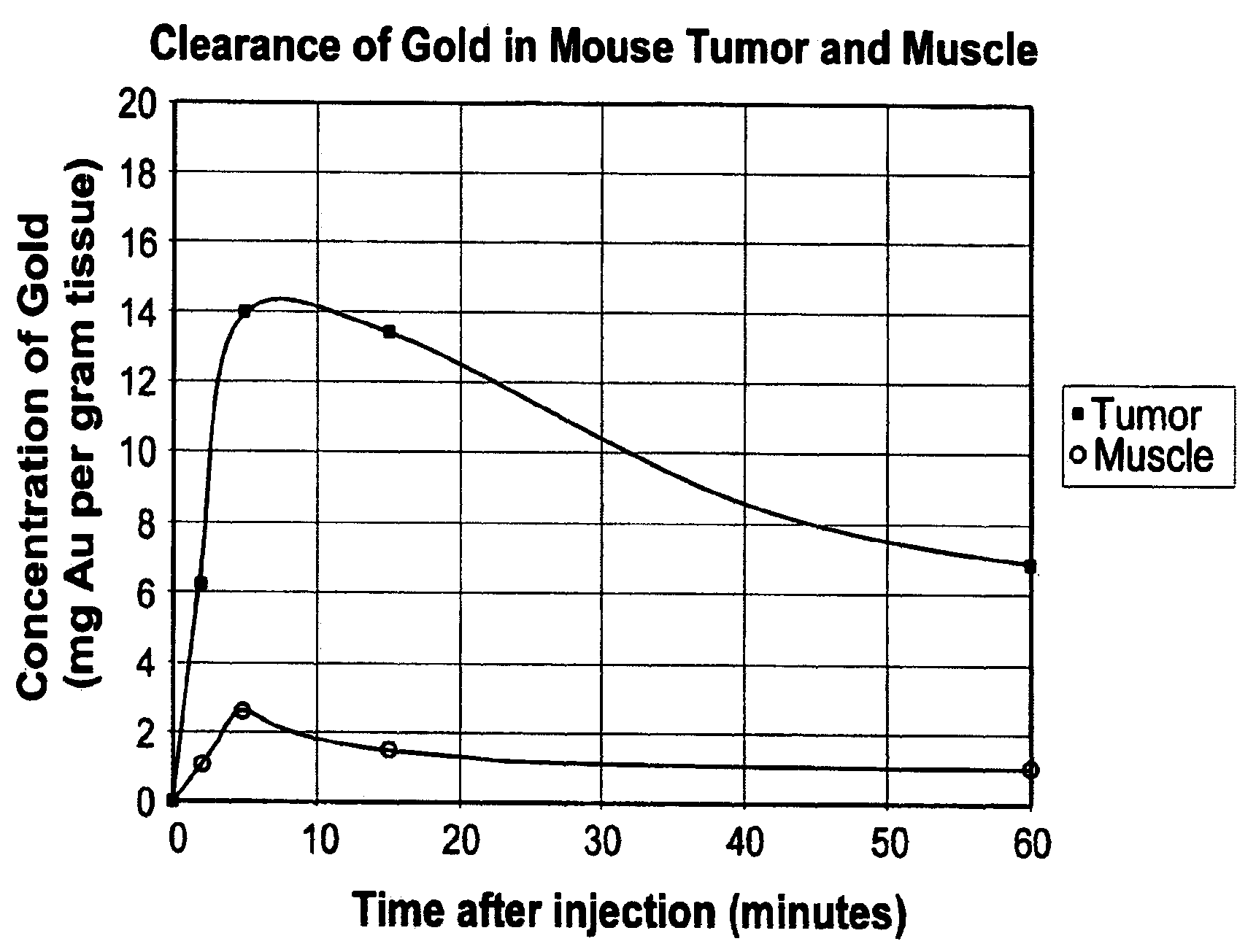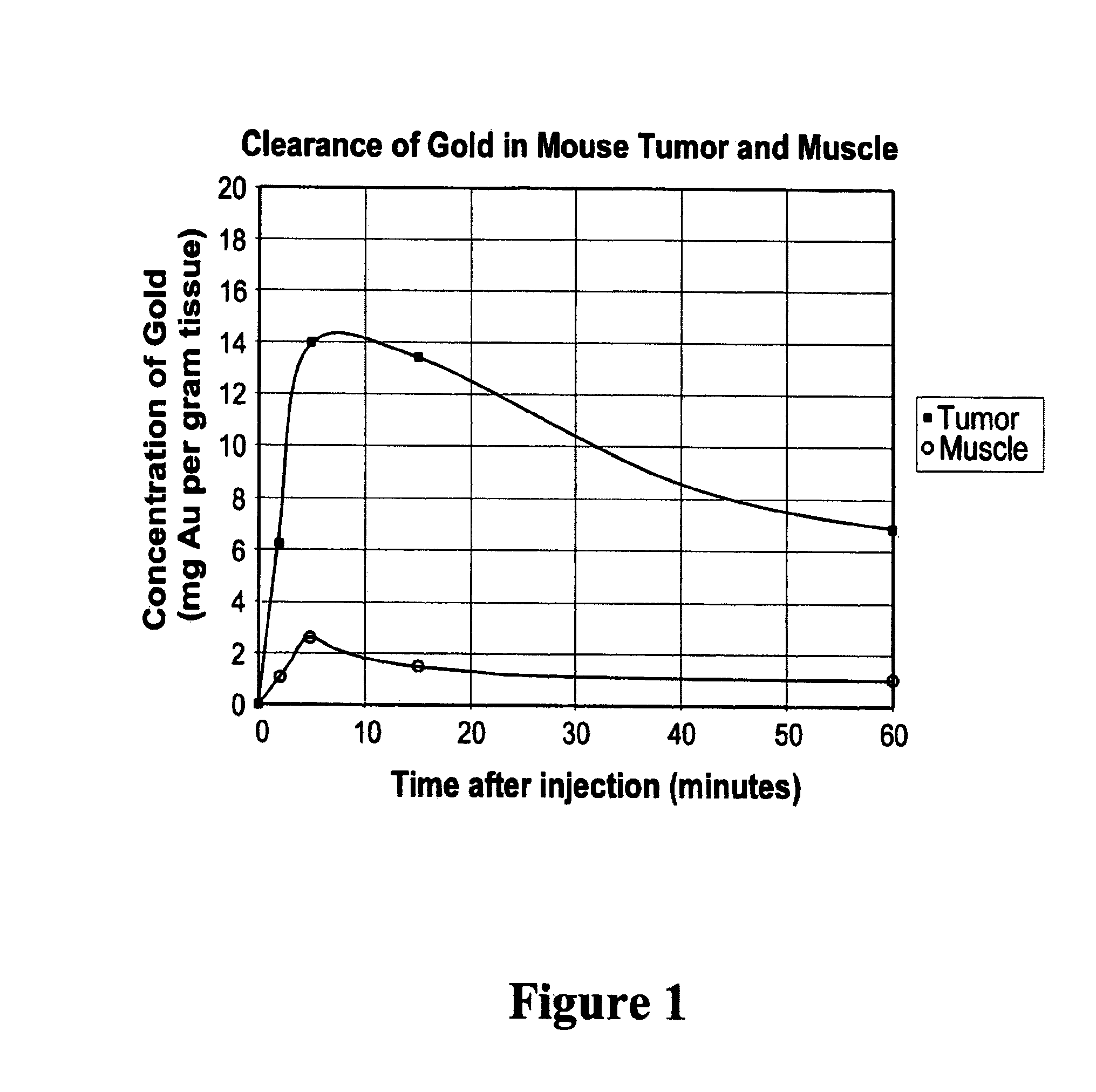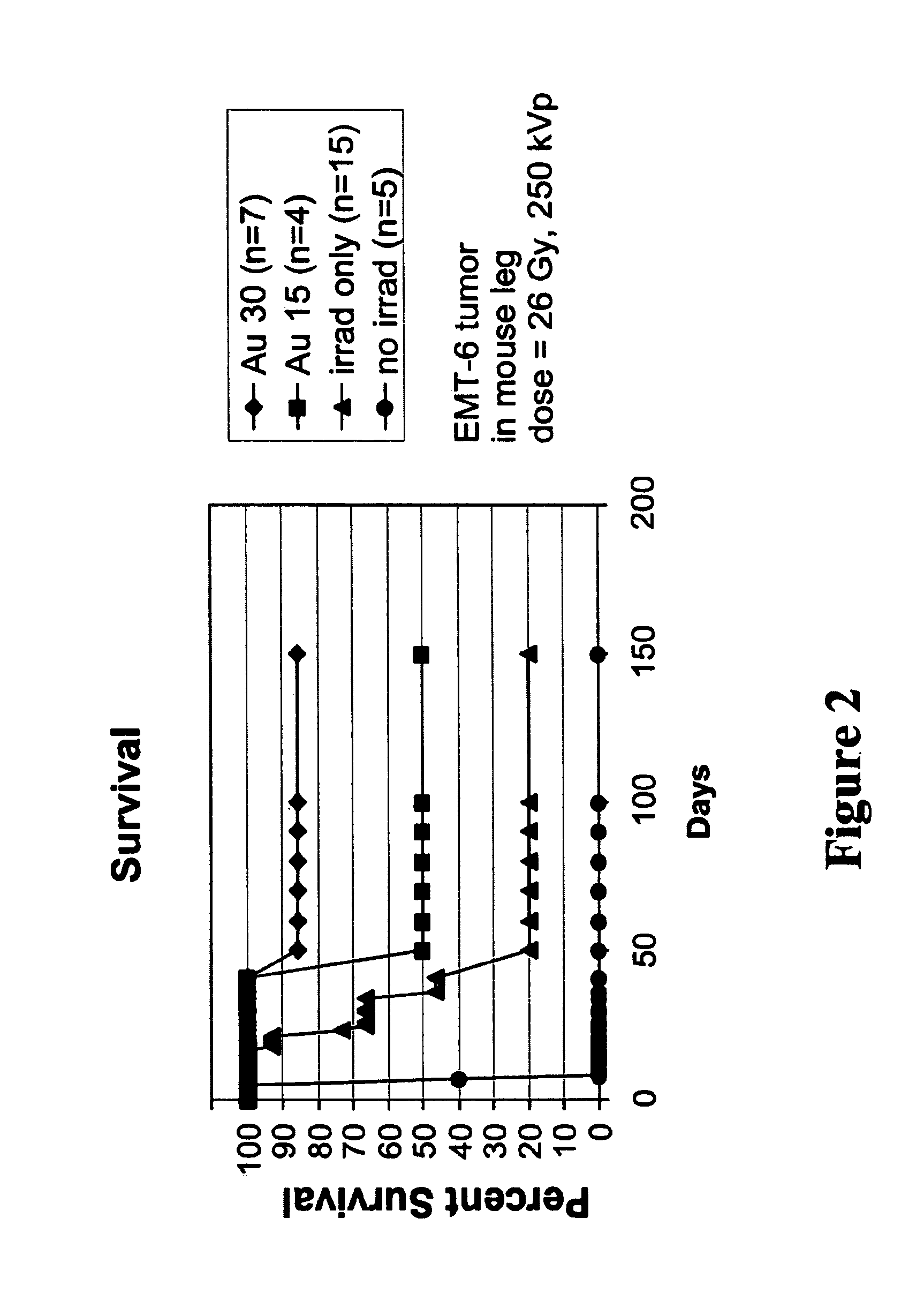Methods of enhancing radiation effects with metal nanoparticles
a metal nanoparticle and radiation effect technology, applied in the field of enhanced radiotherapy, can solve the problems of limited irradiation, serious damage to normal tissue, and radiation not generally very specific to tumors, and achieve the effect of enhancing the cancer-killing effect of irradiation, high use, and better respons
- Summary
- Abstract
- Description
- Claims
- Application Information
AI Technical Summary
Benefits of technology
Problems solved by technology
Method used
Image
Examples
example 1
High Loading of Immunotargeted Gold Nanoparticles into Tumor Cells by Receptor Mediated Endocytosis
[0106]An anti-Epidermal Growth Factor receptor (EGFr) antibody, MAb225, was expressed in cell culture, then purified by protein A column chromatography. This antibody has been shown to have good tumor to non-tumor localization of drug and radioisotope conjugates. The antibody was checked for purity by gel electrophoresis and its activity was verified by targeting to A431 cells using 15 nm colloidal gold antibody conjugates and silver enhancement. A431 cells, which highly express EGFr, and a control cell line with low expression of EGFr, MCF7, were cultured. Gold-antibody conjugates were added to the growth medium and 2 days later, the medium was changed and more gold-antibody was added. The uptake of colloidal gold by A431 cells was obvious after one day, since a cell pellet now had a black appearance, and examination under the light microscope revealed visible black dots in the cytopl...
example 2
Dose Enhancement Factor of 4.5 Achieved in Vitro
[0108]A431 cells were targeted with the gold nanoparticle-anti-EGFr antibody conjugate as described in Example 1. The cells were then washed several times and resuspended in fresh medium, then aliquots of cell suspension were exposed to 250 kVp x-rays with doses between 0 and 16 Gray. A431 cells not exposed to gold nanoparticles were similarly irradiated and used as controls. After irradiation, cells were plated and grown for one week. A metabolic cell viability test was then done to determine the surviving fraction. Cells containing gold showed lower survival at all doses. Analysis of the data showed that the dose required to kill one-half of the cells was 4.5 times less for cells containing the gold nanoparticles. The dose enhancement factor was therefore 4.5.
example 3
Toxicity of Gold Nanoparticle Found to be Low
[0109]Balb / C mice with hindleg tumors were intravenously injected in the tail vein with gold nanoparticles with an average gold diameter of about 2 nm to produce a concentration in the tumor of approximately 0.3% or 0. 15% gold by weight. After two weeks necropsy was performed which showed no unusual findings. Blood was drawn for hematology and chemistry, and yielded the results shown in Table 1. These preliminary results indicate there was no acute toxicity at these doses.
PUM
| Property | Measurement | Unit |
|---|---|---|
| diameter | aaaaa | aaaaa |
| size | aaaaa | aaaaa |
| atomic number | aaaaa | aaaaa |
Abstract
Description
Claims
Application Information
 Login to View More
Login to View More - R&D
- Intellectual Property
- Life Sciences
- Materials
- Tech Scout
- Unparalleled Data Quality
- Higher Quality Content
- 60% Fewer Hallucinations
Browse by: Latest US Patents, China's latest patents, Technical Efficacy Thesaurus, Application Domain, Technology Topic, Popular Technical Reports.
© 2025 PatSnap. All rights reserved.Legal|Privacy policy|Modern Slavery Act Transparency Statement|Sitemap|About US| Contact US: help@patsnap.com



